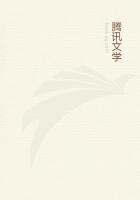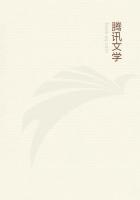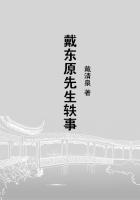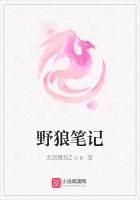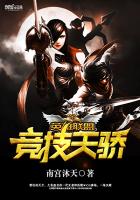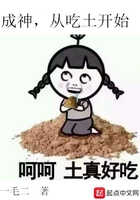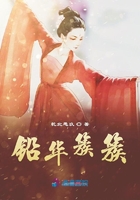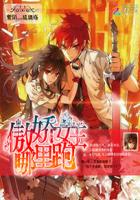9. The mistake is natural enough. Native critics refer to a work of the Han dynasty, which says: "Ten LI outside the WU gate [of the city of Wu, now Soochow in Kiangsu] there is a great mound, raised to commemorate the entertainment of Sun Wu of Ch`i, who excelled in the art of war, by the King of Wu."10. "They attached strings to wood to make bows, and sharpened wood to make arrows. The use of bows and arrows is to keep the Empire in awe."11. The son and successor of Ho Lu. He was finally defeated and overthrown by Kou chien, King of Yueh, in 473 B.C. See post.
12. King Yen of Hsu, a fabulous being, of whom Sun Hsing-yen says in his preface: "His humanity brought him to destruction."13. The passage I have put in brackets is omitted in the T`USHU, and may be an interpolation. It was known, however to Chang Shou-chieh of the T`ang dynasty, and appears in the T`AI P`ING YULAN.
14. Ts`ao Kung seems to be thinking of the first part of chap.
II, perhaps especially of ss. 8.
15. See chap. XI.
16. On the other hand, it is noteworthy that WU TZU, which is not in 6 chapters, has 48 assigned to it in the HAN CHIH.
Likewise, the CHUNG YUNG is credited with 49 chapters, though now only in one only. In the case of very short works, one is tempted to think that P`IEN might simply mean "leaves."17. Yeh Shih of the Sung dynasty [1151-1223].
18. He hardly deserves to be bracketed with assassins.
19. See Chapter 7, ss. 27 and Chapter 11, ss. 28.
20. See Chapter 11, ss. 28. Chuan Chu is the abbreviated form of his name.
21. I.e. Po P`ei. See ante.
22. The nucleus of this work is probably genuine, though large additions have been made by later hands. Kuan chung died in 645B.C.
23. See infra, beginning of INTRODUCTION.
24. I do not know what this work, unless it be the last chapter of another work. Why that chapter should be singled out, however, is not clear.
25. About 480 B.C.
26. That is, I suppose, the age of Wu Wang and Chou Kung.
27. In the 3rd century B.C.
28. Ssu-ma Jang-chu, whose family name was T`ien, lived in the latter half of the 6th century B.C., and is also believed to have written a work on war. See SHIH CHI, ch. 64, and infra at the beginning of the INTRODUCTION.
29. See Legge's Classics, vol. V, Prolegomena p. 27. Legge thinks that the TSO CHUAN must have been written in the 5th century, but not before 424 B.C.
30. See MENCIUS III. 1. iii. 13-20.
31. When Wu first appears in the CH`UN CH`IU in 584, it is already at variance with its powerful neighbor. The CH`UN CH`IUfirst mentions Yueh in 537, the TSO CHUAN in 601.
32. This is explicitly stated in the TSO CHUAN, XXXII, 2.
33. There is this to be said for the later period, that the feud would tend to grow more bitter after each encounter, and thus more fully justify the language used in XI. ss. 30.
34. With Wu Yuan himself the case is just the reverse: -- a spurious treatise on war has been fathered on him simply because he was a great general. Here we have an obvious inducement to forgery. Sun Wu, on the other hand, cannot have been widely known to fame in the 5th century.
35. From TSO CHUAN: "From the date of King Chao's accession [515] there was no year in which Ch`u was not attacked by Wu."36. Preface ad fin: "My family comes from Lo-an, and we are really descended from Sun Tzu. I am ashamed to say that I only read my ancestor's work from a literary point of view, without comprehending the military technique. So long have we been enjoying the blessings of peace!"37. Hoa-yin is about 14 miles from T`ung-kuan on the eastern border of Shensi. The temple in question is still visited by those about the ascent of the Western Sacred Mountain. It is mentioned in a text as being "situated five LI east of the district city of Hua-yin. The temple contains the Hua-shan tablet inscribed by the T`ang Emperor Hsuan Tsung [713-755]."38. See my "Catalogue of Chinese Books" (Luzac & Co., 1908), no.
40.
39. This is a discussion of 29 difficult passages in Sun Tzu.
40. Cf. Catalogue of the library of Fan family at Ningpo: "His commentary is frequently obscure; it furnishes a clue, but does not fully develop the meaning."41. WEN HSIEN T`UNG K`AO, ch. 221.
42. It is interesting to note that M. Pelliot has recently discovered chapters 1, 4 and 5 of this lost work in the "Grottos of the Thousand Buddhas." See B.E.F.E.O., t. VIII, nos. 3-4, p.
525.
43. The Hsia, the Shang and the Chou. Although the last-named was nominally existent in Sun Tzu's day, it retained hardly a vestige of power, and the old military organization had practically gone by the board. I can suggest no other explanation of the passage.
44. See CHOU LI, xxix. 6-10.
45. T`UNG K`AO, ch. 221.
46. This appears to be still extant. See Wylie's "Notes," p. 91(new edition).
47. T`UNG K`AO, loc. cit.
48. A notable person in his day. His biography is given in the SAN KUO CHIH, ch. 10.
49. See XI. ss. 58, note.
50. HOU HAN SHU, ch. 17 ad init.
51. SAN KUO CHIH, ch. 54.
52. SUNG SHIH, ch. 365 ad init.
53. The few Europeans who have yet had an opportunity of acquainting themselves with Sun Tzu are not behindhand in their praise. In this connection, I may perhaps be excused for quoting from a letter from Lord Roberts, to whom the sheets of the present work were submitted previous to publication: "Many of Sun Wu's maxims are perfectly applicable to the present day, and no. 11 [in Chapter VIII] is one that the people of this country would do well to take to heart."54. Ch. 140.
55. See IV. ss. 3.
56. The allusion may be to Mencius VI. 2. ix. 2.
57. The TSO CHUAN.
58. SHIH CHI, ch. 25, fol. I.
59. Cf. SHIH CHI, ch 47.
60. See SHU CHING, preface ss. 55.
61. See SHIH CHI, ch. 47.
62. Lun Yu, XV. 1.
63. I failed to trace this utterance.
64. Supra.
65. Supra.
66. The other four being worship, mourning, entertainment of guests, and festive rites. See SHU CHING, ii. 1. III. 8, and CHOU LI, IX. fol. 49.
67. See XIII. ss. 11, note.
68. This is a rather obscure allusion to the TSO CHUAN, where Tzu-ch`an says: "If you have a piece of beautiful brocade, you will not employ a mere learner to make it up."69. Cf. TAO TE CHING, ch. 31.

